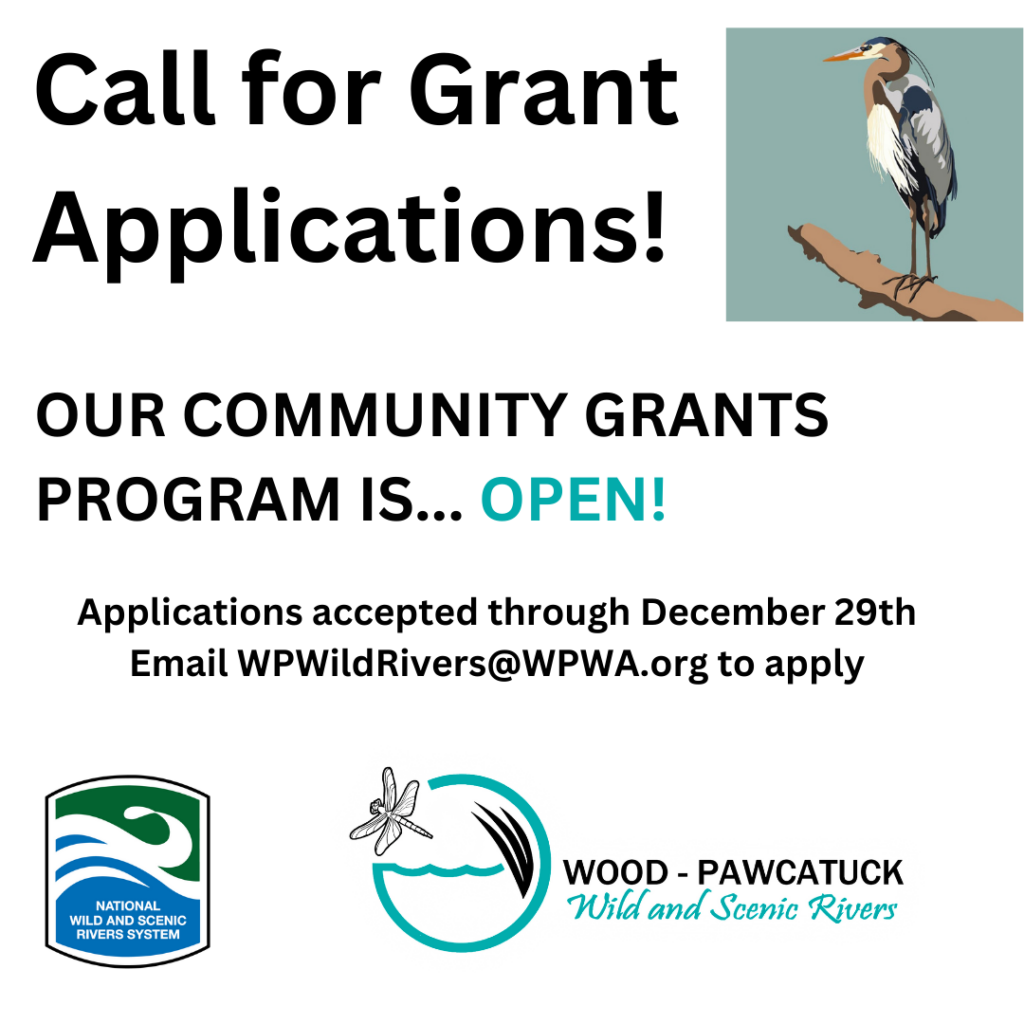By Hugh Markey
HOPE VALLEY, R.I. – OCTOBER 23, 2023 – The Stewardship Council of Wood-Pawcatuck Wild and Scenic Rivers (WPWildRivers) has announced a new round of community grants intended to address needs in the twelve towns of the watershed. The application window runs from October to December 29, 2023, and grants of up to $12,000 are available.
Chair of the projects committee Elaine Calderone commented on last year’s grant round,, “The last round went really well. We funded eight different proposals from a variety of towns. The projects included such activities as invasive species removal, construction of interpretive signage, and elementary school outreach programs.” The initial round of proposals saw grants of up to $4,000 distributed; this time the limit has increased to $12,000. The grant money comes from Congress, which approves a Wild and Scenic Rivers budget.
Several projects from last year’s grant round highlight the work of Wild and Scenic Rivers’ partners. Jim Turek of the Town of Richmond’s Conservation Commission commented on their 2023 project, “We’re stewards of the land, and I think people are happy that we’re taking care of it.” Richmond was awarded a total of $4,000 to restore grassland at Beaver River Park. Grassland habitat is vital to encourage healthy soils and can provide nesting habitat for various species of birds, including the eastern meadowlark, savanna sparrow, and horned lark. Another 2023 awardee, the Westerly Land Trust, used their funding to pay for water quality monitoring, as well as an interpretive sign for the Mastuxet Brook. Other tasks include “… identifying point-sources of pollution along the Mastuxet Brook, which will help enhance water quality downstream in the Lower Pawcatuck River. Besides filling water quality data gaps, identifying point-sources of pollution, and monitoring critical native fish habitat in the lower Pawcatuck, Westerly Land Trust’s water quality program will educate the public about the importance of monitoring and enhancing water quality in our waterbodies.”
“It helps residents of the 12 towns to know about the Wild and Scenic designation,” Calderone said. “There are still quite a few who aren’t aware that the brooks and streams and rivers that they drive by have been designated Wild and Scenic.”
Casey Merkle, Interim Coordinator for the Stewardship Council says, “…these rivers are the reason the Stewardship Council exists. However, the council doesn’t operate alone. We rely on the work of our partners. There are so many hard-working people dedicated to the stewardship of the Wild and Scenic Rivers and beyond. I see people sharing indigenous knowledge to identify edible plants, I see people teaching children how to identify brook trout, I see people growing native plants to restore depleted soils, and I see environmental engineers talking with communities to design a better future for generations to come. It gives me hope and I’m especially excited for this next round of grants.”
Each of the towns has representatives on the Stewardship Council who can help applicants wade through the complexities of the application process. Organizations and individuals interested in getting help can contact Casey, at wpwildrivers@wpwa.org.


